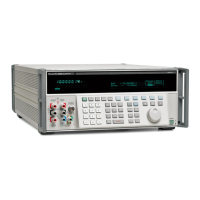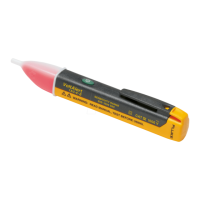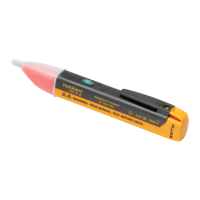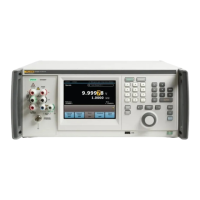5700A/5720A Series II
Operators Manual
5-12
5-18. Sequential and Overlapped Commands
Commands executed immediately as they are encountered in the data stream are called
sequential commands. Commands that begin execution, but are completed some time
later are called overlapped commands, because they can be overlapped by later
commands. Headings under each command description in Tables 5-2 and 5-3 define
whether the command is sequential or overlapped. Because the calibrator queues and
executes overlapped commands in a multitasking way, *OPC, *OPC?, and *WAI are
useful to detect completion of overlapped commands. (See the full descriptions of *OPC,
*OPC?, and *WAI in Table 5-2 for more information.)
5-19. Commands Ignored When Not in Remote
The calibrator can receive and execute most commands in either local or remote state.
Commands that change the state of the instrument are prevented from executing unless
the calibrator is in the remote state. At the end of each command description in Tables 5-
2 and 5-3 it is noted if the command is ignored if the calibrator is not in the remote state.
When the command description says, “ignored when not in remote,” it means that if sent
to the calibrator in the local state, the command will not work, and logs a fault into the
fault queue. (Or it returns the fault message if in serial remote terminal mode.)
To put the calibrator in remote, execute the 1722A BASIC command REMOTE or its
equivalent for other controllers. If you are using the serial port for remote control, send
the REMOTE command (described in Table 5-3) to the calibrator. Refer to
“Remote/Local State Transitions” for more information.
5-20. Commands that Require the Calibration Switch to be Set
The following commands do not work unless the rear panel CALIBRATION switch is in
the ENABLE position: CLOCK, CAL_STORE, CAL_RNG STORE, CAL_WBFLAT
STORE, CAL_WBGAIN STORE, *PUD, and RPT_STR. Attempting to use any of these
commands with the CALIBRATION switch in the NORMAL position logs a fault into
the fault queue. (Or it returns the fault message if in serial remote terminal mode.)
5-21. Long Term Commands
Remote commands that take a relatively long time to execute are identified as such in
Table 5-2, “Commands,” which follows the command summary in Table 5-1. If a
command that produces a change in instrument state (i.e. any “I” command) is received
during the execution of a long-term command, for example, CAL_CHK, the command is
ignored and a device-dependent fault occurs. (Bit 3 in the Event Status Register is set to 1
if enabled, and the fault code for the fault is available to be read from the fault queue. See
the FAULT? and EXPLAIN? commands for more information.)

